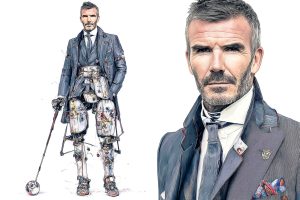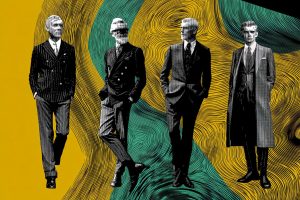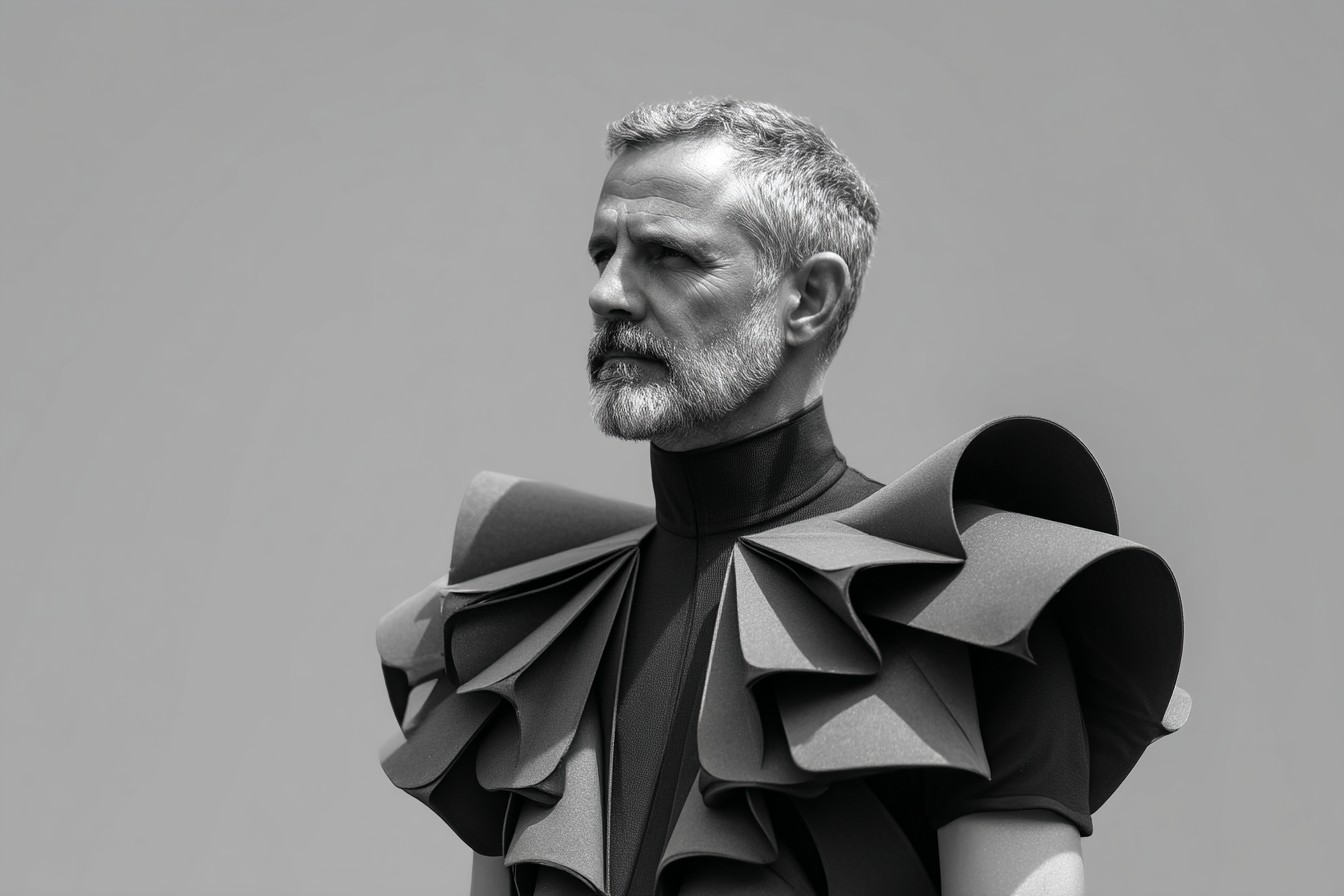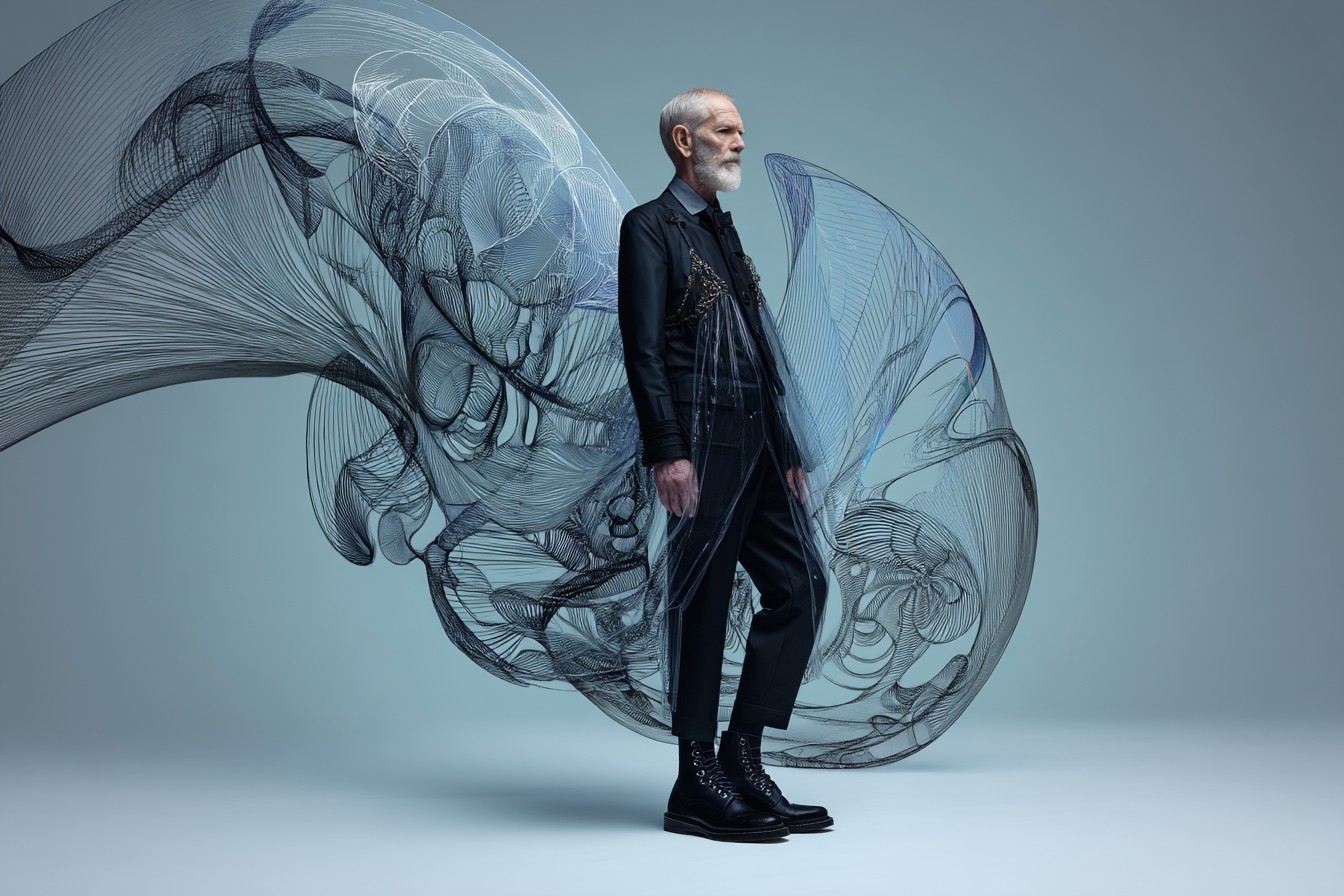I’ve got a confession that might get my menswear journalist card revoked: some weekends, I pay more attention to what’s happening on the touchline than on the pitch. Not because I don’t care about who’s winning (Manchester born and bred, so you can guess where my loyalties lie), but because the sideline has become one of the most fascinating runways in men’s style. Football managers have evolved from the tracksuited figures of my childhood into something far more interesting—walking masterclasses in how clothing communicates authority, personality, and strategic intent.
This struck me last season when I found myself explaining to my nephew why Pep Guardiola’s cashmere crew neck meant something different from Jürgen Klopp’s baseball cap and quilted jacket. “They’re saying completely different things with their clothes,” I told him, sounding insufferably pretentious even to myself. But the more I thought about it, the more I realized football managers offer some of the most relevant style lessons for regular blokes—far more than the players with their designer logos and £10,000 watches.
Managers operate under constraints that most of us recognize: they need to look professional but functional, authoritative but approachable, distinctive without being ridiculous. They’re men doing a job that requires them to be taken seriously while also potentially needing to sprint down a touchline or huddle in the rain for 90+ minutes. Sound familiar? It should, because most of us need wardrobes that can handle similar demands, minus the thousands of fans scrutinizing our outfit choices.

Let’s start with Guardiola, because his evolution from Barcelona to Bayern to City has been a fascinating study in sartorial diplomacy. Early Pep was all razor-sharp suits, skinny ties, and that distinctly Continental silhouette that announced “I’m not from around here” in the most elegant way possible. But watch how he’s adapted—maintaining his fundamental style principles while softening the edges for British sensibilities. The formal suits have often given way to fine-gauge knitwear, smart trousers, and those pristine Puma sneakers that tell you he’s both detail-oriented and comfortable in his authority.
What’s the lesson here? That true style confidence comes from knowing which rules matter to you personally and which ones you can adapt to your environment. Guardiola never looks like he’s trying to be someone else—his wardrobe has simply evolved alongside his management philosophy. There’s something powerful about that kind of subtle adaptation without fundamental compromise. It’s exactly the balance most of us are trying to strike when navigating different workplaces and social situations.
Then there’s Klopp, whose touchline uniform couldn’t be more different but communicates equally effectively. The baseball cap, the casual jacket, the tracksuit bottoms on occasion—it’s a carefully constructed casual that says “I’m focused on function, not appearance.” But that’s the genius of it: by seeming not to care too much about clothes, he’s created one of the most recognizable managerial looks in football. His New Balance trainers and club-branded windbreaker aren’t accidental; they’re signifiers of his brand of passionate, relatable leadership.
I once heard a fashion editor sneer about Klopp’s “dad clothes,” missing the point entirely. His style works precisely because it feels authentic to his personality and management approach. The lesson? Authenticity trumps fashion every time. I’ve seen countless men force themselves into whatever’s trendy only to look deeply uncomfortable, while the bloke who’s found what genuinely works for him—even if it’s objectively “uncool”—somehow manages to look completely at ease and therefore stylish.
The late-career evolution of José Mourinho offers another fascinating study. From the immaculate Armani suits of his first Chelsea stint (that iconic cashmere coat!) to the more casual approach of recent years, you can track his changing relationship with the media and football establishment through his wardrobe choices. Early Mourinho dressed like he wanted everyone to know he was the Special One; later Mourinho often opted for a more relaxed approach that suggested he no longer felt the need to prove his status through tailoring.

What’s important here isn’t whether you prefer early or late Mourinho style—it’s recognizing how clothing can reflect your position and ambitions. When you’re establishing yourself, dressing slightly more formally than required can communicate seriousness and ambition. Once you’ve made your mark, the confidence to dress down a bit can signal security in your position. I’ve watched this pattern play out countless times across different industries, and the football touchline just makes it more visible.
British managers like Graham Potter have mastered the art of what I call “considered casual”—clothing that’s clearly thoughtfully chosen but doesn’t look fussy. Potter’s touchline uniform of quarter-zip sweaters, well-cut trousers and minimal branding strikes that difficult balance between being well-dressed and not looking overly concerned with fashion. It’s an aesthetic that translates perfectly to real life for men who want to look put-together without seeming preening.
The real genius of this approach is its versatility. A good quarter-zip with smart trousers works for so many situations in modern life—casual offices, parent-teacher meetings, weekend lunches, even casual Fridays in more formal workplaces. It’s the uniform of the man who wants to look like he’s made an effort without looking like he’s made too much effort, which is practically the definition of good everyday style.
On the other end of the spectrum, there’s the impeccable tailoring tradition represented by managers like Carlo Ancelotti. His suits aren’t trendy or fashion-forward—they’re just perfectly executed examples of classical menswear that will look as good in photos twenty years from now as they do today. The raised eyebrow may be his most famous feature, but it’s the consistent quality of his tailoring that offers the most valuable lesson: investing in genuine quality basics rather than chasing trends will serve you better in the long run.
I’m not suggesting every bloke needs a rotation of Kiton suits like Ancelotti presumably has. But the principle holds true at every price point: better to have one well-made navy suit that fits perfectly than three trendy ones that will look dated by next season. I learned this lesson the hard way after a disastrous period in my twenties when I bought a series of skinny suits in unusual colors, all of which photographed terribly and became unwearable within a year. An Ancelotti approach would have saved me considerable money and embarrassment.
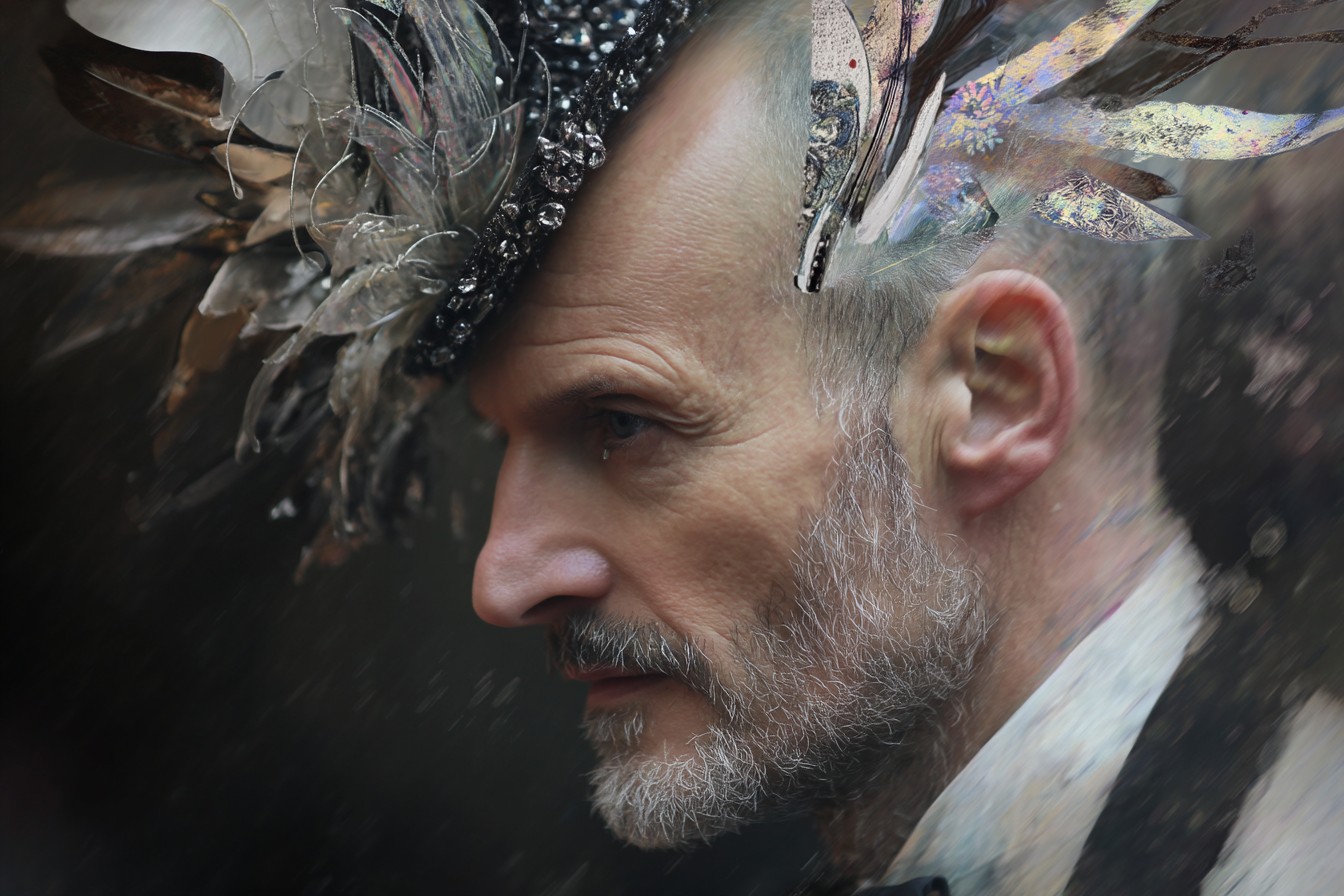
Football managers also offer masterclasses in dressing for your body type and age—something many style guides discuss but few illustrate effectively. Watch how someone like Sam Allardyce works with his imposing frame rather than against it, or how Roy Hodgson maintained a dignified elegance into his seventies without trying to dress decades younger. These are valuable lessons in a world where many men either give up entirely on style as they age or desperately cling to the clothes of their youth.
The touchline also provides a laboratory for observing how clothing affects perception. When Eddie Howe switched from tracksuit to suit as his career advanced, it wasn’t just about looking smarter—it was a conscious signal about his evolution as a manager. The same principle applies in regular life: dressing differently for different contexts isn’t fake; it’s a visual communication tool that helps you navigate social situations more effectively.
One particularly useful lesson from football managers is how to handle transitional seasons—both literal and metaphorical. The manager’s challenge of looking appropriate through freezing winter nights, mild autumn evenings, and occasionally sweltering summer afternoons mirrors the everyday challenge of dressing appropriately in Britain’s notoriously fickle climate. The solution, as demonstrated on touchlines across the country, lies in layering with purpose rather than bulk.
Take Thomas Tuchel during his Chelsea period—his quilted gilet over a slim-fitting sweatshirt with tapered trousers became something of a signature. The combination offered warmth without sacrificing mobility or looking like he was heading on an Arctic expedition. It’s the perfect template for weekend errands or casual Friday that easily adjusts to temperature changes throughout the day. I’ve shamelessly stolen this formula more times than I care to admit.
Then there’s the underrated skill of knowing when to stand out and when to blend in. The touchline dynamic between managers offers a perfect illustration—some moments call for the fluorescent statement piece that ensures you’re visible from the stands (the Klopp approach), while others demand the understated elegance that lets your work speak for itself (the Potter method). Knowing which situation calls for which approach is a social skill as much as a style one.
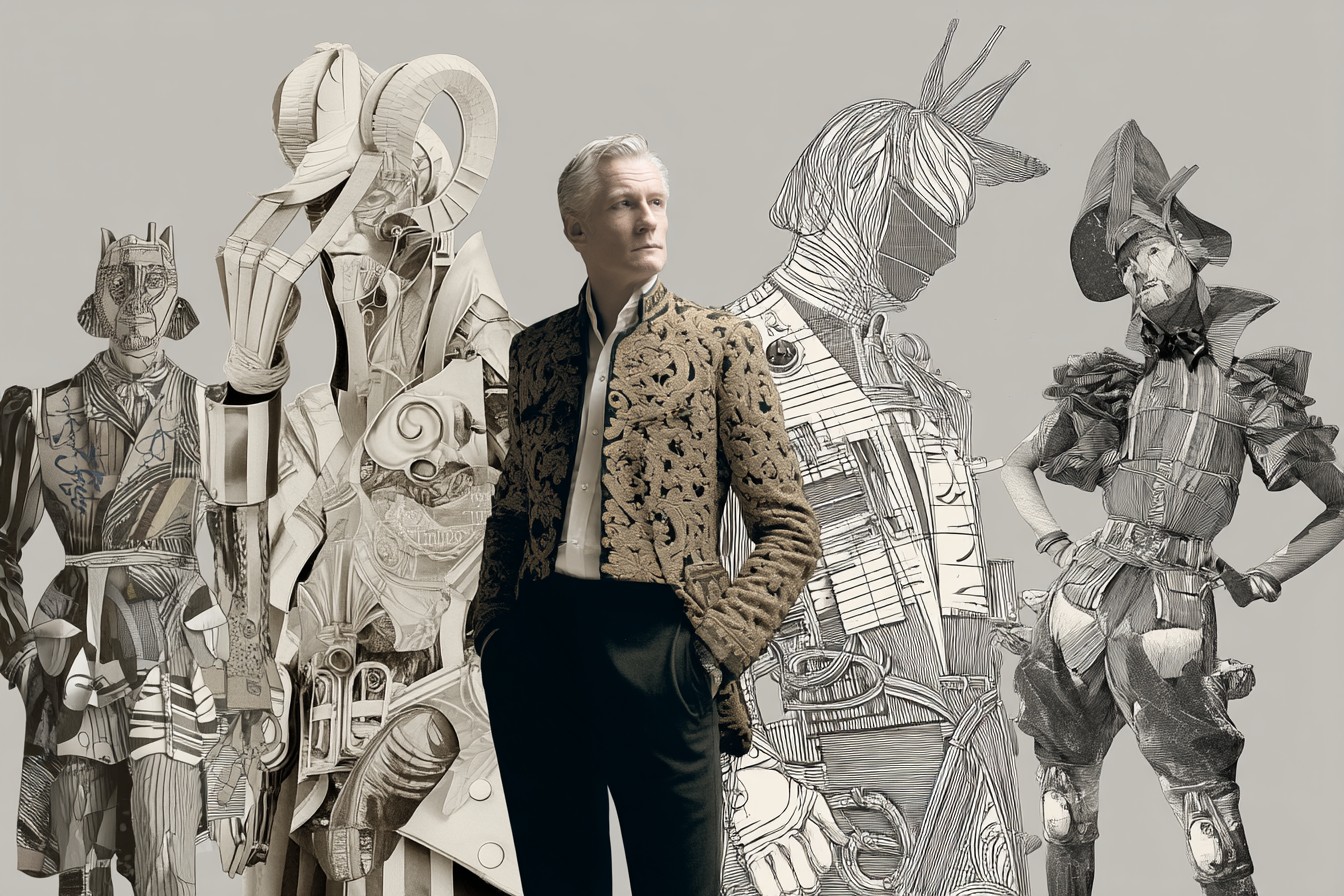
What I find most compelling about manager style is how it balances personality expression with professional necessity. Unlike players, who often seem caught in an arms race of designer logos and extravagant accessories, managers have to maintain a certain authority while still expressing who they are. It’s exactly the balance most of us are trying to strike—showing personality without becoming a caricature, looking appropriate without disappearing into conformity.
I realized the true value of this observation last year when helping my brother-in-law overhaul his wardrobe for a new senior role. He kept gravitating toward extremely safe, borderline boring options, explaining that he wanted to be “taken seriously.” I found myself pulling up photos of Premier League touchlines to demonstrate how authority doesn’t require sartorial blandness—how Guardiola’s distinctive style enhances rather than undermines his authority precisely because it feels authentic to him.
“Think of it like your managerial style,” I told him. “Are you the passionate motivator or the cool tactician? The approachable mentor or the visionary leader? Your clothes should support that story, not tell a completely different one.” He ended up with a wardrobe that felt both professionally appropriate and personally authentic, and later told me he feels more confident in meetings because his appearance now reinforces who he actually is.
That’s the ultimate lesson from the football touchline: effective style isn’t about following rules or adopting someone else’s uniform wholesale. It’s about finding clothing that authentically expresses who you are while meeting the practical demands of your life. Whether that means the calculated casualness of a Klopp, the precise elegance of an Ancelotti, or the thoughtful evolution of a Guardiola depends entirely on your own personality and circumstances.
Just remember: like the best managers, your style should evolve rather than revolutionize. Small, thoughtful adjustments over time will always serve you better than dramatic overhauls that feel forced or artificial. And unlike what happens on the pitch, in the world of personal style, there’s room for everyone to win.









